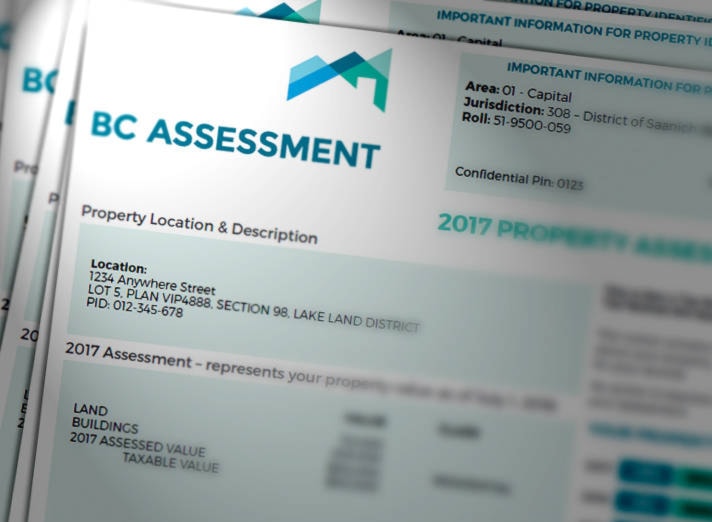Average single family dwelling values in Terrace and area have declined slightly, from $309,000 to $305,000 for a dip of 1.3 per cent, indicate figures released last week by the B.C. Assessment Authority.
The new value, taken as a ‘snap shot’ on July 1, 2017 by the assessment authority, follows on the previous year in which average values remained the same.
The values now provide the foundation this year for local and other government and public sector bodies to set taxation rates to raise revenue for their operations.
Single-family home assessments in Kitimat have dropped again, this time by an average of 16.2 per cent, with Kitimat the only municipality in the north to register a decline of this size.
The average value as of July 1, 2017 is pegged at $233,000 compared to the July 1, 2016 value of $278,000. The assessment drop last year was an average of five per cent for single family homes in Kitimat and 12 per cent the year before.
In Prince Rupert, assessments increased by 5.9 per cent for a value of $276,000 compared to the previous value of $260,000.
In Smithers, assessments rose by 3.5 per cent for a value of $297,000 compared to the $287,000 the year before.
While the overall assessment in Terrace and area declined slightly, there were variances based on neighbourhoods and locations.
On the Bench, the assessment this year is $386,000, a slight increase over the previous year’s value of $382,000.
In the Horseshoe, last year’s value was $282,000 and this year the value is $279,000.
The Southside registered the largest drop in the city, from $266,000 last year to $250,000 this year.
In Lower Thornhill, last year’s average value of $243,000 climbed slightly this year to $245,000.
And on the Thornhill Bench, this year’s value is $302,000, an increase from last year’s $294,000.
The assessment authority also released average values for strata units such as condos and townhouses. On the Bench, the value is $384,000, on the Southside it is $92,000 and in the Horseshoe, it is $159,000. There are 481 strata units in Terrace.
Assessment authority figures can also reveal the state of the area home construction business with 2778 homes being assessed in Terrace and 725 in Thornhill for a total figure of 3,503 homes.
Last year’s total for Terrace and Thornhill was 3,485, making for an overall increase of 15 homes through a combination of new construction or the replacement of older homes which were demolished.
This year’s assessments and those from the previous year reflect a calming of the local real estate scene which had experienced market increases based on some measure by speculation surrounding the potential for a liquefied natural gas industry in the region.
Last year four properties in the area made the top 100 list of most valuable residential properties in the north and this year that number is the same and all four are located at Lakelse Lake.
The property with the highest value in the north is at Moberly Lake in the Dawson Creek area and is pegged at $2.892 million.
How assessed values are reflected in individual residential property tax bills has yet to be exactly determined as local government bodies work toward finalizing their 2018 budgets.
In City of Terrace is planning for a three per cent overall property tax increase in accordance with its latest five-year financial plan, citing the need to cover factors such as rising wage and benefit costs and inflation.
Late last year, for example, the city and its unionized workers belonging to the Canadian Union of Public Employees agreed on a four-year contract providing a 1.5 per cent wage hike this year, a 1.5 per cent hike in 2019 and two per cent increases in both 2020 and 2021. Benefit improvements were also negotiated.
Generally speaking, homeowners who see a 1.3 per cent drop in their assessments can expect to see the three per cent tax hike as being implemented by the city.
A drop greater than 1.3 per cent could mean a tax increase of less than three per cent, no increase or even a decrease from last year’s tax bill.
Conversely, homeowners with assessments that have increased could expect to pay more this year.
Early information obtained by the city from the BC Assessment Authority shows an overall increase in assessments of $18.4 million across various property class categories.
Although this is an early forecast and subject to change, this assessment increase represents $134,000 in new tax revenue for the city.
The assessment authority makes its valuation decisions based on a number of factors, including changes in the condition of a residence such as renovations and, more broadly, market forces.
Local governments also collect taxes for other public sector bodies and authorities. The city, for example, collects its own taxes as well as those on behalf of the Kitimat-Stikine regional district, the Coast Mountains School District, the North West Regional Hospital District, the Municipal Finance Authority and the B.C. Assessment Authority. Those rates and amounts are determined by those bodies and not by the district.
Eligible homeowners once again can receive homeowner grants to reduce their overall property tax bite.
The basic grant remains at $570 for most of the province, rising to $770 in northern and rural areas to buffer the impact of the carbon tax on home heating and other costs.
Homeowners who are 65 or older are eligible for grants of up to $845 in most of the province and up to $1,045 if in a rural or northern area. That also applies if a homeowner is a person with a disability.
